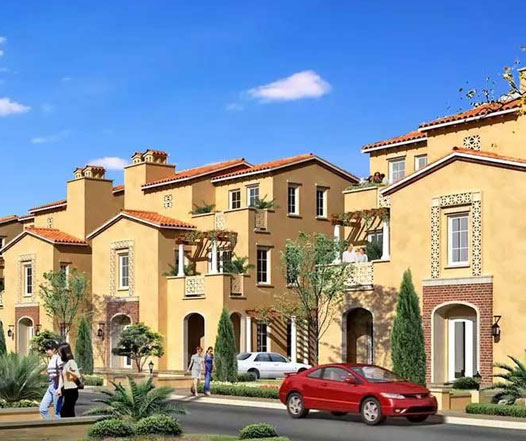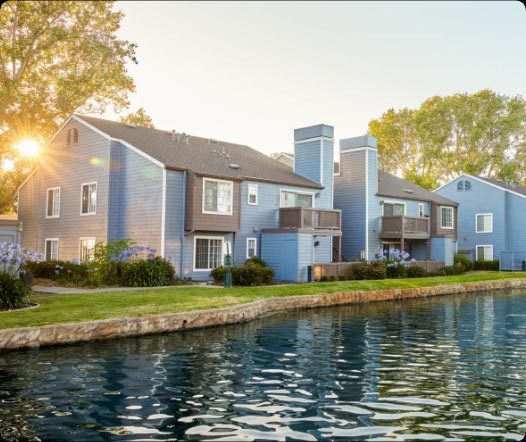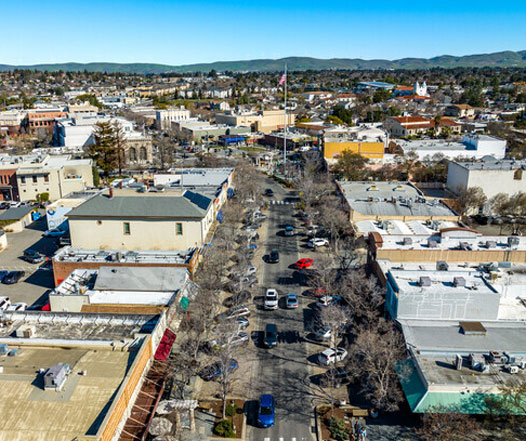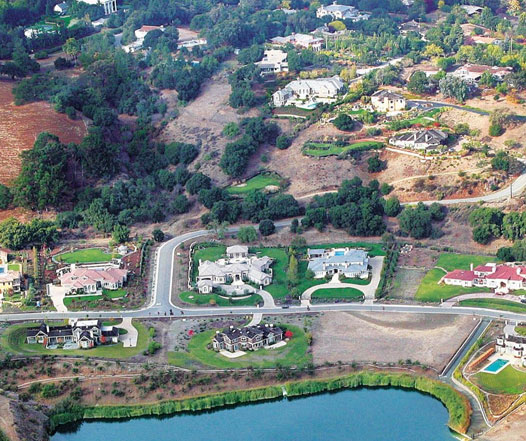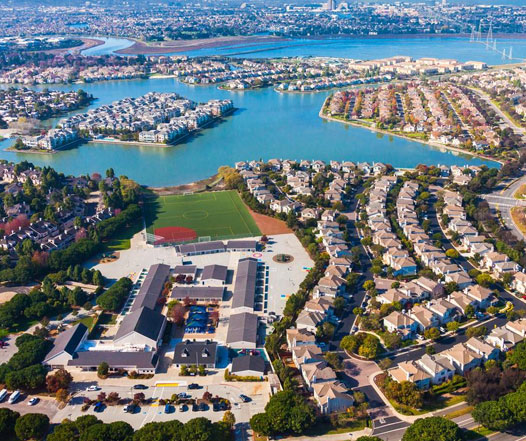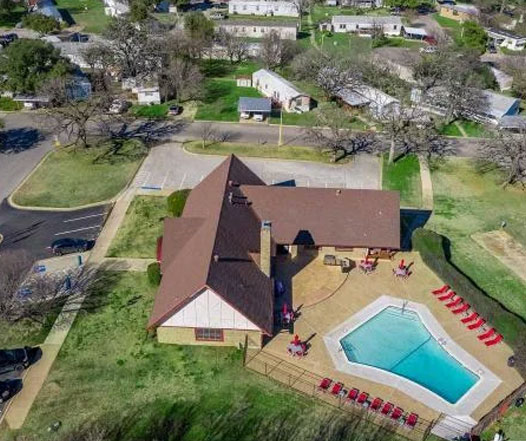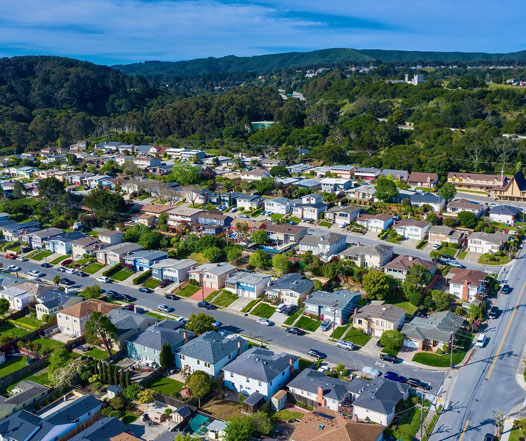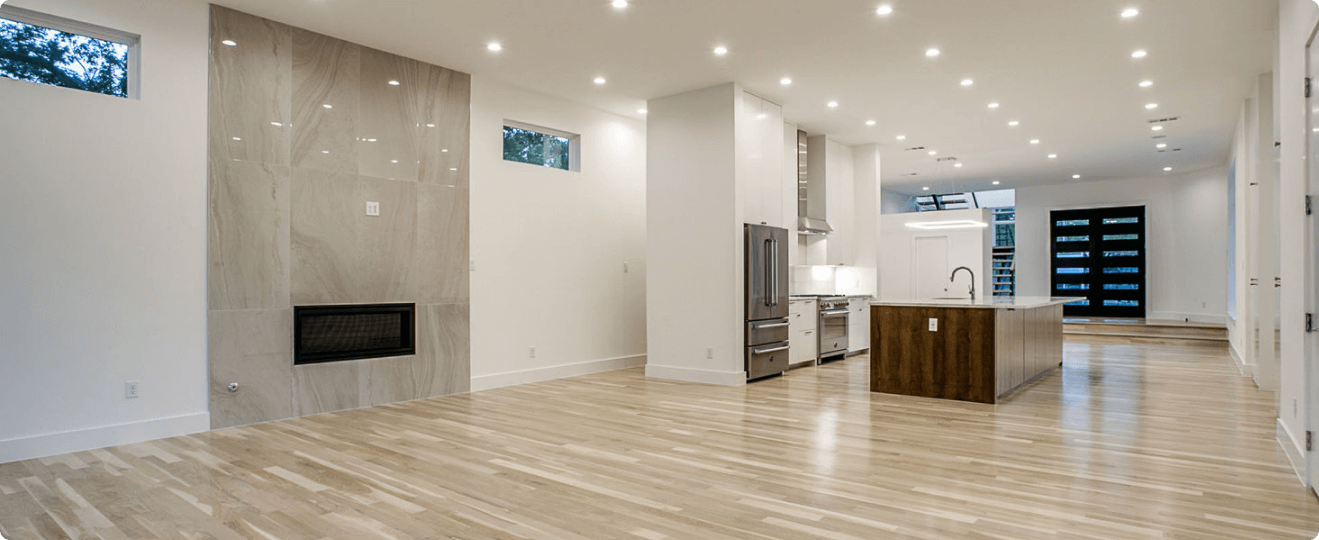
Introduction
Campbell has embraced Accessory Dwelling Units (ADUs) as a solution to address housing shortages and provide affordable living options. The city’s ADU regulations are designed to ensure that these units are built safely, comply with zoning requirements, and integrate seamlessly with existing neighborhoods. The regulations cover key aspects such as size limitations, setbacks, parking requirements, and design standards. By understanding and following these guidelines, homeowners can navigate the ADU development process more efficiently and contribute to the sustainable growth of Campbell housing stock. ADU Specialist Bay Area offers expert guidance and support to help homeowners successfully navigate Campbell ADU regulations and bring their projects to life.
Essential ADU Rules for Campbell
What you can build
Maximum size
ADUs in Campbell can be up to 1,000 square feet, depending on lot size.
Side / rear setbacks
Typically, a 6-foot setback is required from side and rear property lines.
Two stories
Two-story ADUs are allowed in Campbell, subject to height and size restrictions.
Building separation
A minimum separation of 6 feet is required between the ADU and primary dwelling.
Permitting timeline
Standard
The permitting process for a standard ADU in Campbell typically takes 4-6 weeks.
Coastal
Properties in coastal zones may require additional permits, extending the timeline to 8-12 weeks.
Zoning Regulations in Campbell
Zoning regulations play a crucial role in determining where and how ADUs can be built in Campbell. These regulations ensure that ADUs integrate harmoniously with existing neighborhoods and maintain the desired character of the community.
ADU Size Limitations
The maximum allowed floor area for an ADU in Campbell depends on the property's lot size and whether it is a single-family home or a duplex/multi-family property.
| Lot Size | Single-Family (Maximum Floor Area Allowed) | Duplex and Multi-Family (Maximum Floor Area Allowed) |
| Under 7000 | 700 sq ft | Not permitted |
| 7000 - 9999 | 800 sq ft | 1 ADU + 400 sq ft per existing unit (up to 1000 sq ft max) |
| 10000 - 12999 | 900 sq ft | 1 ADU + 450 sq ft per existing unit (up to 1000 sq ft max) |
| 13000 - 19999 | 1000 sq ft | 1 ADU + 500 sq ft per existing unit (up to 1000 sq ft max) |
| 20000+ | 1000 sq ft | 1 ADU + 550 sq ft per existing unit (up to 1000 sq ft max) |
ADU Height Limitations
In Campbell, the maximum allowed height for an ADU is 16 feet for a single-story unit and 25 feet for a two-story unit. These height restrictions help maintain a consistent scale and character within neighborhoods.
Building coverage
The total building coverage on a property, including the primary dwelling and ADU, must not exceed 40% of the lot area.
Location
The permitted location for an ADU on a property depends on whether it is a single-family home or a duplex/multi-family property.
| Property Type | Location Requirement |
| Single-Family Homes | Attached ADUs: Must be located within the existing primary dwelling. |
| Detached ADUs: Must be located in the rear or side yard. | |
| Junior ADUs (JADUs): Must be located entirely within the primary dwelling. | |
| Duplex and Multifamily | Attached ADUs: Must be located within an existing unit. |
| Detached ADUs: Must be located in the rear or side yard. |
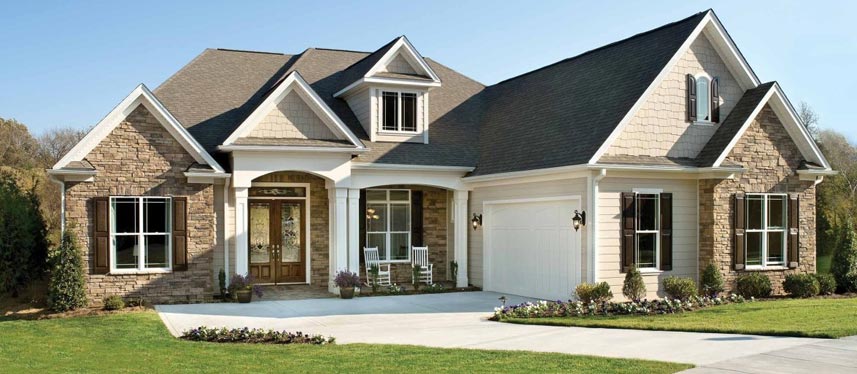
Exterior details
The exterior design of an ADU should be compatible with the primary dwelling in terms of color, materials, and architectural style. This helps maintain a cohesive appearance and preserves neighborhood character.
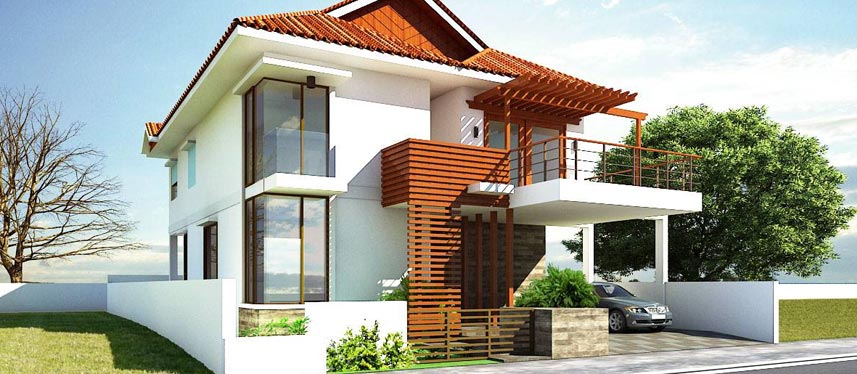
Parking
One additional off-street parking space is typically required for an ADU, unless the property meets certain exemptions, such as proximity to public transit or location within a historic district.
Setbacks and buffer zones
ADUs must adhere to minimum setback requirements from property lines and maintain a buffer zone from adjacent structures. In Campbell, side and rear setbacks are typically 6 feet, and a minimum separation of 6 feet is required between the ADU and primary dwelling.
Minimum Lot Area
The minimum lot area required for an ADU varies based on the property's lot size.
| Lot Size | Minimum Lot Area for ADU | Description |
| Under 7000 | ADUs not permitted | Lots under 7,000 sq ft do not meet the minimum requirement. |
| 7000 - 9999 | 7000 sq ft | Lots must be at least 7,000 sq ft to build an ADU. |
| 10000 - 12999 | 10000 sq ft | Lots must be at least 10,000 sq ft to build an ADU. |
| 13000 - 19999 | 13000 sq ft | Lots must be at least 13,000 sq ft to build an ADU. |
| 20000+ | No minimum lot area requirement | No minimum lot area is required for lots 20,000 sq ft or larger. |
Connection for utilities
ADUs must be connected to the property’s main utility lines, including water, sewer, and electricity. Depending on the ADU’s size and location, separate meters or utility connections may be required to ensure adequate capacity and compliance with local regulations.
Fire safety
ADUs must comply with local fire safety regulations, including the installation of smoke detectors, carbon monoxide alarms, and fire-resistant materials. Adequate emergency access and egress must also be provided.
Room specifications
- Sleeping Areas: ADUs must have at least one designated sleeping area (bedroom or studio space) that meets minimum size and egress requirements.
- Kitchen: ADUs must include a fully functioning kitchen with a sink, refrigerator, and cooking appliance. The kitchen should have adequate counter space and storage.
- Bathroom: A complete bathroom with a sink, toilet, and shower or bathtub is required. The bathroom must meet minimum size and ventilation requirements.
- Storage: While not required, providing adequate storage space can greatly enhance the functionality and livability of an ADU.
Short-term Rentals and Home Occupations Regulations
In Campbell, ADUs are intended for long-term residential use. Short-term rentals (less than 30 days) are generally not permitted without proper permits and approvals. Home occupations within ADUs may be allowed, subject to specific guidelines and restrictions.
Building codes
ADUs must comply with all applicable building codes, including structural, electrical, plumbing, and energy efficiency standards. Working with a professional designer and contractor helps ensure that the ADU meets these requirements and passes necessary inspections.
Campbell ADU Permit Guidelines
Obtaining the necessary permits is a critical step in the ADU development process. The following table outlines the common permits required and their estimated fees:
| Permit Type | Description | Estimated Fee |
| Building Permit | Required for ADU construction. | $2500 - $5000 |
| Electrical Permit | Required for electrical work. | $400 - $700 |
| Plumbing Permit | Required for plumbing installations. | $400 - $700 |
| Mechanical Permit | Required for HVAC systems. | $400 - $700 |
| Grading Permit | May be required for site work. | $300 - $500 |
| Site Development Permit | May be required for larger projects. | $300 - $500 |
| Zoning Permit | Ensures compliance with zoning regulations. | $200 - $400 |
Property requirements
When planning an ADU in Campbell, it’s important to consider various property requirements that may impact the feasibility and design of the project.
Parking
Properties with an ADU must provide one additional off-street parking space, unless the ADU meets certain exemptions, such as proximity to public transit or location within a historic district. The parking space can be covered or uncovered and must meet minimum size and access requirements.
Front setbacks
ADUs must adhere to the front setback requirements of the primary dwelling, which are typically 20 feet in most residential zones. This ensures that the ADU maintains a consistent street presence and does not encroach on the front yard space.
Side and rear setbacks
Side and rear setbacks for ADUs in Campbell are typically 6 feet. These setbacks provide a buffer between the ADU and adjacent properties, promoting privacy and reducing potential impacts on neighboring homes.
Open space and rear yards
Properties with an ADU must maintain a certain percentage of the lot area as open space, typically around 40-50%. This open space can include landscaped areas, patios, and rear yards. The specific requirements may vary based on the property’s zoning and lot size.
Properties that qualify
To determine your property’s eligibility for ADU development, contact the Campbell Planning Department.
- Verify that your property is within Campbell jurisdiction.
- Check the specific residential zones that permit ADUs. Common zones in Campbell include R-1, R-2, and R-M.
- Other General Plan designations that permit ADUs:

- Residential Mixed-Use (RMU): These areas allow a mix of residential and commercial uses, and ADUs can be incorporated into existing or new development.
- Transit-Oriented Development (TOD): Properties located near transit hubs or corridors may have special provisions for ADU development to promote walkability and reduce car dependency.
- Specific Plan areas: Some neighborhoods in Campbell have unique specific plans that outline custom ADU guidelines and requirements. Check if your property falls within a specific plan area.
Development standards
Single-family
- Attached: ADUs attached to a single-family home must be located within the existing primary dwelling and cannot exceed 50% of the primary dwelling’s living area.
- Detached: Detached ADUs on single-family properties must be located in the rear or side yard and adhere to setback and size requirements.
Duplex properties
- Attached: ADUs attached to a duplex must be located within an existing unit and cannot exceed 50% of that unit’s living area.
- Detached: Detached ADUs on duplex properties must be located in the rear or side yard and adhere to setback and size requirements.
Multifamily properties
- Attached: ADUs attached to a multifamily building must be located within an existing unit and cannot exceed 50% of that unit’s living area.
- Detached: Detached ADUs on multifamily properties must be located in the rear or side yard and adhere to setback and size requirements.
Junior ADUs (JADUs)
Junior ADUs (JADUs) are small dwelling units (up to 500 square feet) that are created within the existing floor plan of a single-family home. They have a separate entrance, efficiency kitchen, and may share bathrooms with the primary dwelling.
Property designations
- Flood Zones: If your property is located in a flood zone, special construction requirements and permits may apply to ensure the ADU is built to withstand potential flood risks.
- Geohazard Zones: Properties in areas with known geologic hazards, such as landslides or earthquakes, may require additional engineering and safety measures for ADU construction.
- Historic Designation: If your property is located in a historic district or has a historic designation, special guidelines may apply to ADU development to preserve the character and integrity of the historic structure.
- Easements: Existing easements on your property, such as utility or access easements, may impact the location and design of an ADU. It’s important to identify and address any easement restrictions early in the planning process.
Summary
Building an ADU in Campbell can be a rewarding way to add value and flexibility to your property, but it’s crucial to understand the local regulations and requirements. By familiarizing yourself with Campbell ADU rules, zoning regulations, permitting process, and property considerations, you can navigate the development process more effectively. Working with experienced professionals, such as architects, contractors, and permit expediters, can help streamline the process and ensure a successful outcome. With careful planning and attention to detail, your Campbell ADU can become a valuable asset and a welcome addition to your property.
FAQ
ADUs should be designed and situated to respect the privacy of both the ADU occupants and neighbors. This includes strategic window placement, appropriate fencing or screening, and consideration of sight lines.
ADUs must follow local waste management guidelines, including proper disposal of trash, recycling, and compost. Occupants may share waste bins with the primary residence or have separate containers, depending on local regulations.
Zoning regulations dictate where and how ADUs can be built. They specify factors such as permitted zones, lot size requirements, height limits, and density restrictions. Understanding local zoning is crucial for ADU planning.
Permit costs for ADUs in Campbell depend on various factors, including the project scope, square footage, and necessary inspections. Fees may include building permits, impact fees, and utility connection charges.
ADUs must adhere to local building codes, which cover aspects such as structural integrity, fire safety, electrical and plumbing systems, and energy efficiency. Working with a professional designer and contractor helps ensure compliance.
Adding an ADU to your property may require updating your homeowners insurance policy to ensure adequate coverage. Consult with your insurance provider to discuss any necessary adjustments or additional riders.
Parking needs for ADUs vary based on factors such as the unit’s size, number of bedrooms, and proximity to public transit. Some ADUs may be exempt from additional parking, while others may need dedicated off-street spaces.
ADUs in California must comply with Title 24 Building Energy Efficiency Standards, which include guidelines for insulation, windows, lighting, and appliances to promote energy conservation and sustainability.
Setbacks specify the minimum distance between an ADU and property lines. In Campbell, ADUs typically need to maintain a 6-foot setback from side and rear property lines, but specific guidelines may vary based on the ADU’s size and location.
Short-term rental regulations for ADUs vary by location. In Campbell, ADUs are generally restricted from being used as short-term rentals (less than 30 days) without proper permits and approvals.
ADUs need access to basic utilities such as water, electricity, and sewer. In most cases, they share connections with the primary dwelling, but separate meters or lines may be needed depending on local regulations and utility company policies.
Building an ADU may increase property taxes, as it adds value to the property. However, the specific tax implications depend on factors such as the ADU’s size, construction cost, and local tax assessments.
Campbell has design guidelines to ensure ADUs integrate well with the primary residence and neighborhood. This includes considerations for roof pitch, exterior materials, colors, and overall architectural character.
ADU landscaping should be designed to maintain a certain percentage of the lot as open space, typically around 40-50%. Choosing water-efficient landscaping and irrigation systems is encouraged.
Campbell ADU size limits vary based on factors such as lot size, property type (single-family, duplex, or multi-family), and local regulations. In Campbell, ADUs are generally allowed up to 1000 square feet, but specific guidelines apply.
ADUs are subject to local noise ordinances, which aim to minimize disturbances and maintain neighborhood peace. Occupants must be mindful of noise levels, particularly during designated quiet hours.
If your property is located in a historic district or has a historic designation, special guidelines may apply to ADU development. These guidelines aim to preserve the character and integrity of historic structures and neighborhoods.
ADUs may share an address with the primary residence or have a separate address for emergency services and mail delivery. Proper signage and mailbox placement are important for ensuring efficient communication and access.
Occupancy standards specify the maximum number of people allowed to reside in an ADU. These standards are based on factors such as the ADU’s size, number of bedrooms, and local housing codes.
ADUs must comply with local fire safety regulations, including the installation of smoke detectors, carbon monoxide alarms, and fire-resistant materials. Adequate emergency access and egress are also important.





